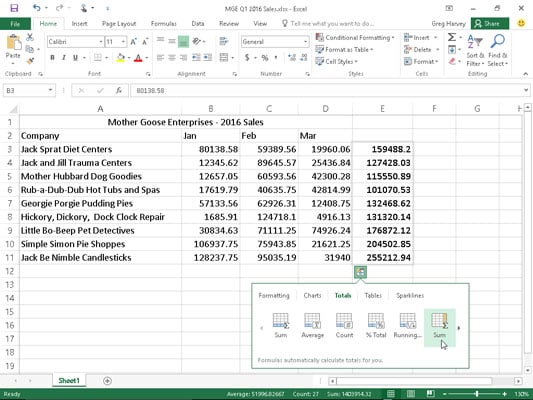



All the sheets must be in a consistent layout and must stay that way.Here is a list of all the functions for which this trick works. This approach doesn’t just work for the SUM function. with dynamic arrays, all these can be achieved easily 🙂 Well, I’m here to give you some good news. How can I build a PivotTable-like report, but using formulas so I don’t have to click refresh ever again.How can I stop copying down formulas every time my source data changes.How can I quickly create unique lists of items to use with my SUMIFS calculation?.How can I sort my information using a formula, so I don’t have to keep clicking the sort button?.How can I use VLOOKUP to return all the matching items, not just the first?.Have you ever faced these spreadsheet scenarios? Yet most Excel users do not even know what they are. Of all the features available in Excel dynamic arrays provide the most power for the smallest time investment. The formula in cell C5 is: =SUM('Q1:Q2'!C5)Įxcel could mistake Q1 and Q2 as cell references therefore, adding single quotes around the sheet names is essential. The example below shows the calculation of just Jan, Feb, and Mar sheets. There is the added advantage that the tabs also serve as helpful presentation dividers. For example, we could add quarters as interim bookends too. The formula in cell C5 is =SUM(Start:End!C5) By dragging sheets in and out of the Start and End bookends, we can sum almost anything we want. Instead of using the names of the first and last tabs, we can create two blank sheets to act as bookends for our calculation. We can change this to be more dynamic, making it even easier to use. The formula in cell C5 is: =SUM(Jan:Dec!C5) SUM across multiple sheets – dynamic All the tabs from Jan to Dec are included in the calculation. With this beautiful little formula, we can see all the worksheets included in the calculation just by looking at the tabs at the bottom. Replace A1 with the cell reference you wish to use.If not, the single quotes can be left out. If your worksheet names contain spaces, or are the name of a range (e.g., Q1 could be the name of a sheet or a cell reference ), then single quotes ( ‘ ) are required around the sheet names. Replace FirstSheet and LastSheet with the worksheet names you wish to sum between.To sum the same cell across multiple sheets of a workbook, we can use the following formula structure: =SUM('FirstSheet:LastSheet'!A1) That’s why I’m sharing it here by using this approach, you can look like an Excel genius to your work colleagues too 🙂 SUM across multiple sheets – basic I still remember the first time a work colleague showed me this trick my jaw hit the ground in amazement. The good news is that there is another approach we can take that will enable us to sum across different sheets easily. And just think about the time you will waste if there is a new tab to be added. The chances are that you don’t need to do all that clicking. How do you know if you’ve clicked on every worksheet? What if you happened to miss one by accident? There is only one way to know – you’ve got to check it! The formula in cell C5 is: =Jan!C5+Feb!C5+Mar!C5+Apr!C5+May!C5+Jun!C5+ The screenshot below shows an example of this type of approach. Also, if the sheet names are long, the formula starts to look quite unreadable. If there are a lot of worksheets, it takes a while to click on them all. I see many examples where the user has clicked the same cell on each sheet, putting a “+” symbol between each reference. For example, it could be a monthly report with a tab for each month (see screenshot below as an example).

Have you ever had to sum the same cell across multiple sheets? This often occurs where information is held in numerous sheets in a consistent format.


 0 kommentar(er)
0 kommentar(er)
